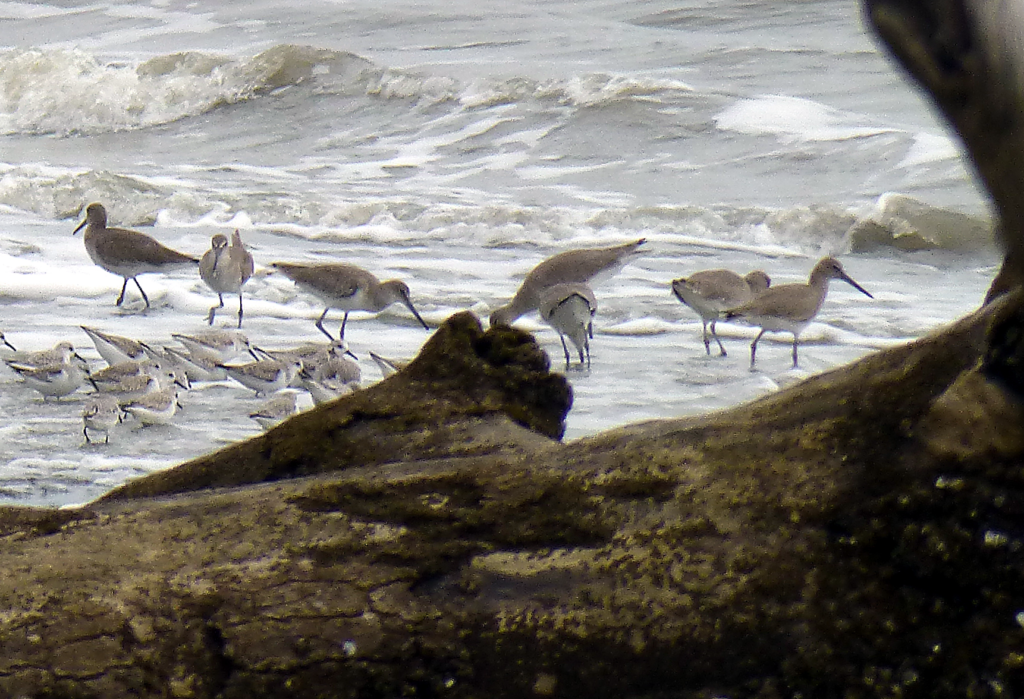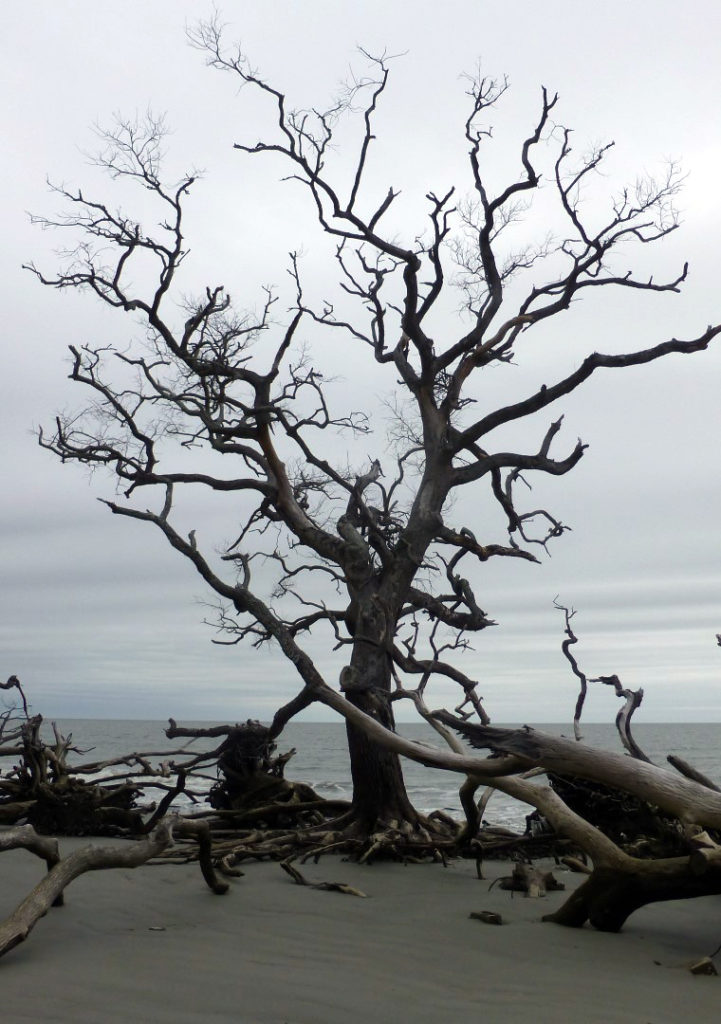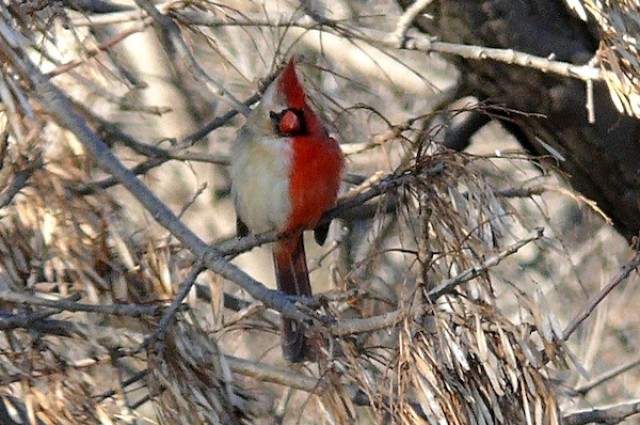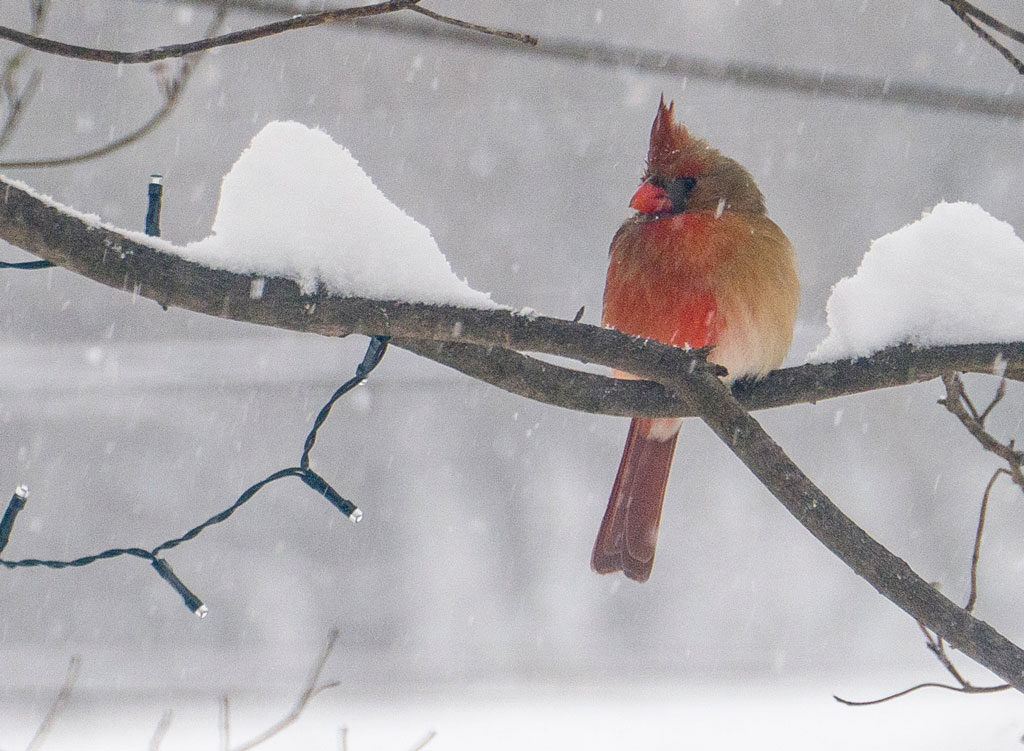Confession: I’ve never been into New Year’s as a spiritually potent time, not like I’m into the solstices, equinoxes, and cross-quarters, because it always seems like an arbitrary date, unconnected to the power of season. Yet it is a social calendar reality, change from old to new is an archetypal theme, and I do enjoy the energy of New Beginnings.
Year after year at New Year’s my husband and I are drawn to travel with good friends to the coast to celebrate. This year we went for a week to the ACE Basin in the Low Country of South Carolina to visit the wonderful national wildlife refuges and state parks there. It is always a good start to my new year to be out in nature, with the elements and with wildlife. We found a lot of managed wildlife, but also much wild life there. I would certainly like to be more into the wild life of my body-soul and into the wild life of nature-spirit in this coming year.
My soul is drawn, I realize, to the coast at New Year’s to be in a liminal place at this betwixt and between time. Beaches, tidal creeks, marshes, hammock islands, and maritime forests are all in-between places, halfway between water and land. Many of the birds here are winter season birds—the loons, the horned grebes, the Canada geese, the various ducks, the northern harriers, the kestrels, the coots, the ruddy turnstones, sanderlings, dunlins, sapsuckers, kinglets, yellow-rumps, and sparrows are only here in the winter. There is a liminality to the fact that these birds are winter visitors, migratory, and we are visiting them in their season.
 There is something liminal about witnessing the nothing there/something there surprises of the birds: We see a huge empty stick nest (of an osprey?): Oh, no, now an eagle is standing sentinel on it, and, oh, a second eagle arrives with another big stick for the nest and sits for a bit before leaving to go get another stick.
There is something liminal about witnessing the nothing there/something there surprises of the birds: We see a huge empty stick nest (of an osprey?): Oh, no, now an eagle is standing sentinel on it, and, oh, a second eagle arrives with another big stick for the nest and sits for a bit before leaving to go get another stick.
By day we pass a mostly empty island in a pond; by dusk hundreds of little blues, ibises, and snowy egrets are arriving in lines coming in from all directions. I didn’t know there were this many little blue herons in the whole world! Suddenly silence becomes very noisy!

The behavior of the animals themselves evokes liminality: the fiddler crabs skittering up above and then popping down below the mud, the harriers gliding in the air zone just above the marsh, the comical group of sanderlings working the very edge of the tide as they run in at each wave, turn on a dime, and run back out as one.
At barrier beaches such as Botany Bay there is the presence of both life and death at the same time: lively lines of willets dart about feeding in the surf just beyond the still, dead bones of hundreds of live oaks and palm trees on the eroding edge of the island (10 feet a year!).


The marsh, which was all greenish gold grass when we crossed it toward the beach, is on our return a wonderland, misty grey with black grasses, filled with fairy-white spider orbs as far as the eye can see. The formerly isolated groups of revelers crossing the marsh are now all talking to each other in their excitement at such a sight.

So, here I am on the liminal cusp of the new year, trying to find my wild soul’s relation to the wildness around us. My soul wants to find meaning that links my mid-winter time with the birds’ mid-winter time, that links my transitional time between years with coastal transitional happenings at these intermediary places. I enter into this new year of my life facing changes happening all around me. This two-legged wildlife vividly shows me constant adaptation to change.
No wonder we seek out the coast at New Year’s! The coast goes well with New Year’s. I loved learning that there is a line delineated on the map at which all the rivers officially go from freshwater to salty. Can I see the place within me where my tame soul becomes more wild? Exactly at what point does my wildness make contact with the wildness out there? Certainly our bodies’ wildnessess have many samenesses. How is my soul’s wildness the same as a great blue heron’s wildness?
One other thing: While on the long pier at the end of Hunting Island we were trying to identify some distant ducks. Red-breasted mergansers. My husband kept exclaiming, “Look at this bird, look at this bird, he’s white on one side and colored on the other.” At first we thought it must be appearing like that as he turned toward the sun, but no, he was white on one side when he turned away from the sun, too. Not knowing if I could trust our eyes, not knowing what to make of such a weird thing, I kind of just dismissed it as an artifact of…of…what, I don’t know.
When we got home he was surfing his favorite science site and saw a just published article picturing a cardinal, half red male, half very light female, right down the middle. I’ve never heard of such a thing! (It’s called bilateral gynandromorphy.) What a strange synchronicity for the Janus-faced New Year. January is named for Janus, the Roman god of thresholds and doorways, pictured with two faces looking in opposite directions. And this bird, as a friend pointed out, “is a shamanic one, as ancient shamans were often ‘between genders’.” In many cultures out-of-the-ordinary animals are honored as spirit animals. I am reminded that every day is a spiritually potent day, even New Year’s.

Afterword: Shortly after telling our son, Tristan, about the amazing merganser and the cardinal photo above, he photographed this cardinal in his front yard! Such synchronicities are gifts that open my heart to wonder.

Marcia E Herman
I had not known about this condition. What an amazing and wondrous image Tristan took! Thank you.
Betty Lou
Yes, Marcia, it was quite a synchronicity for Tristan to spot that cardinal right after we learned about this!
Marsha
Betty Lou, you share wonderful gifts with words and images. Thank You!
Betty Lou Chaika
Marsha, I’m honored that you think so!
Jill Over
Betty Lou,
I’m just now reading your New Year’s Reflections. I love the coast in the wintertime, but I haven’t been for many years. Your reflections brought reminders of the treasures to find in winter. The fog creates such illusive images. Bilateral gynandromorphy is certainly something to look for! Thank you. Jill
Betty Lou Chaika
Jill, I’m reading your comment while at the coast again in winter. I feel like we’re sharing our love for the coast together, right now!